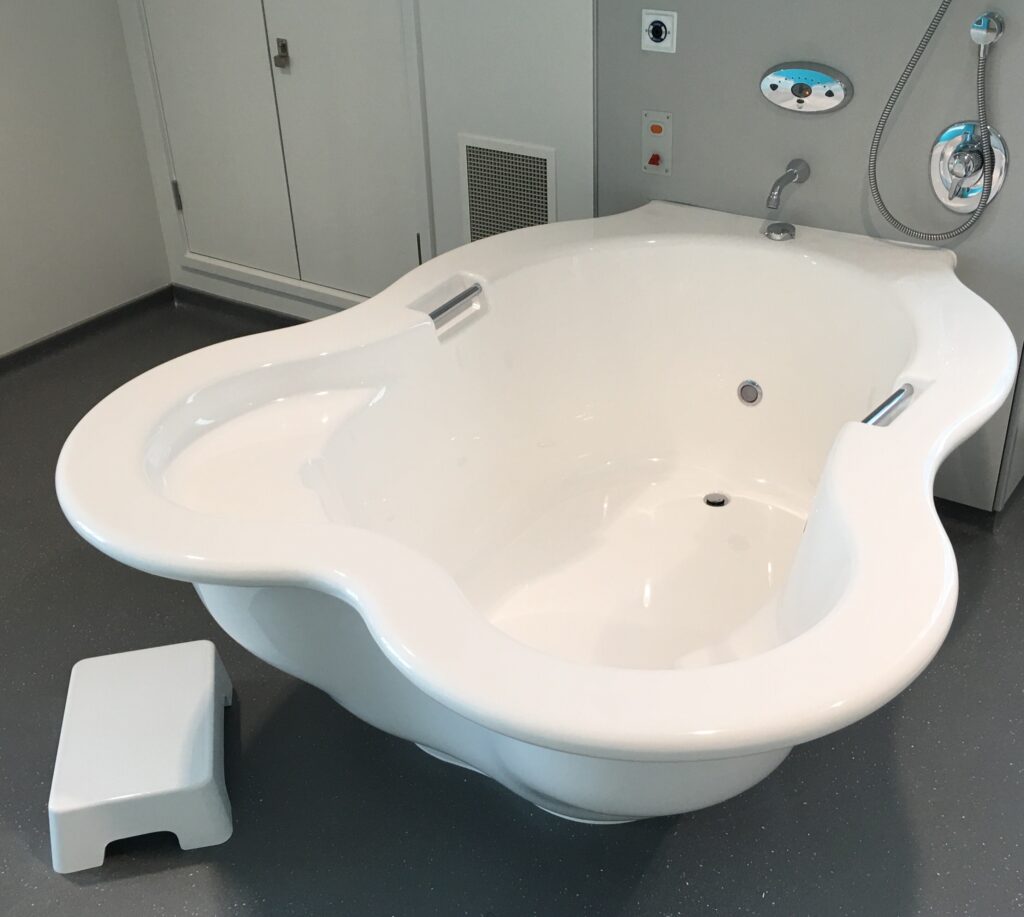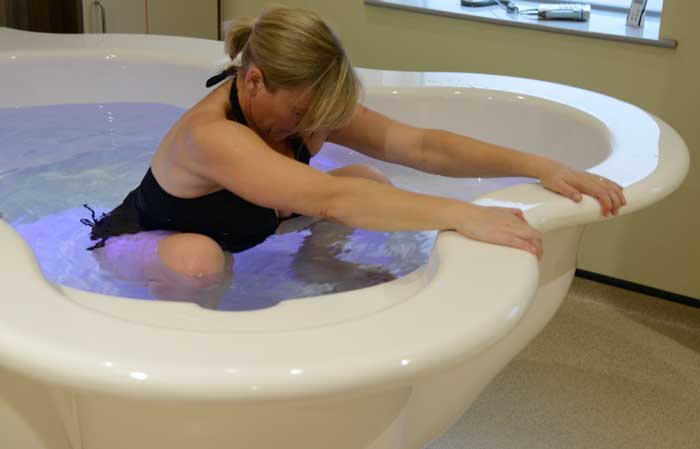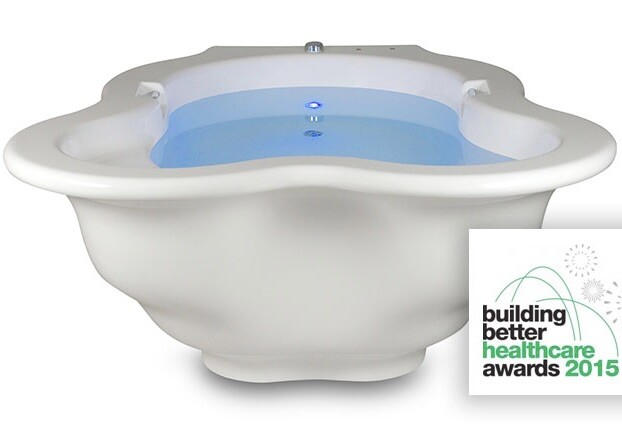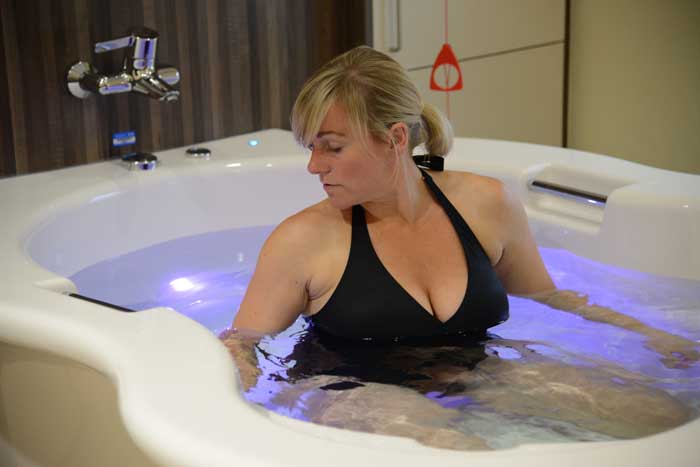Excerpt from article published by Big Birtha who provides information and support for bigger mums and mums to be.
All women are more buoyant and supported by water, it’s one of the reasons swimming and aqua aerobics are particularly good forms of exercise while pregnant.
But the benefit is likely to be greater for obese women, as fatter bodies are naturally more buoyant.
The buoyancy and support provided by water eases movement, which may make both maintaining an active labour and facilitating access for monitoring easier.
On land, it is cumbersome and difficult for a heavily pregnant woman of any size to quickly move between kneeling, reclining, sitting, leaning, crouching, turning from front to back etc.
In water, it is simple and easy to shift to whatever position is most comfortable/convenient, even midway through contractions.
Being in water also promotes positions which are more agreeable for birthing. Lying flat on your back on a bed is one of the worst positions to be in during labour.
When you are on your back you are working against gravity; actually trying to push the baby out uphill.
It’s only a slight incline, but it’s there.
To add to the problem, when lying down, your body weight is also resting on your coccyx (tailbone), forcing it into the pelvic cavity and reducing space for the baby.
In water, even if you were to float on your back, you wouldn’t be putting the same pressure on your tailbone, and you are far more likely to take an upright position, crouching or kneeling, for instance; positions which on land are uncomfortable to maintain, but not in water.
This frees up your coccyx to keep out of the way.
It is well documented that warm water reduces pain felt by labouring women, and decreases the use of other pain relief.
Given the issues with providing epidural anaesthesia to obese women, it seems sensible that using water; an effective non-pharmaceutical intervention to help with pain should be an attractive alternative?
Obese women are at increased risk of having longer labours, and of moving on to instrumental delivery and caesarean sections for ‘failure to progress’.
Yet immersion in water has been shown to significantly reduce the length of labour in ‘normal’ sized women.
It doesn’t take much of a leap of imagination to consider that water might help to address this problem, at least in some obese women?
Active Birth Pools are specially designed for to accomodate bigger mothers enabling them to move and benefit from the positions natural to labour and birth.
Various means of entry and exit from the pool as well as emergency evacuation have been considered and designed for to safeguard over weight mothers and the midwives who care for them.









